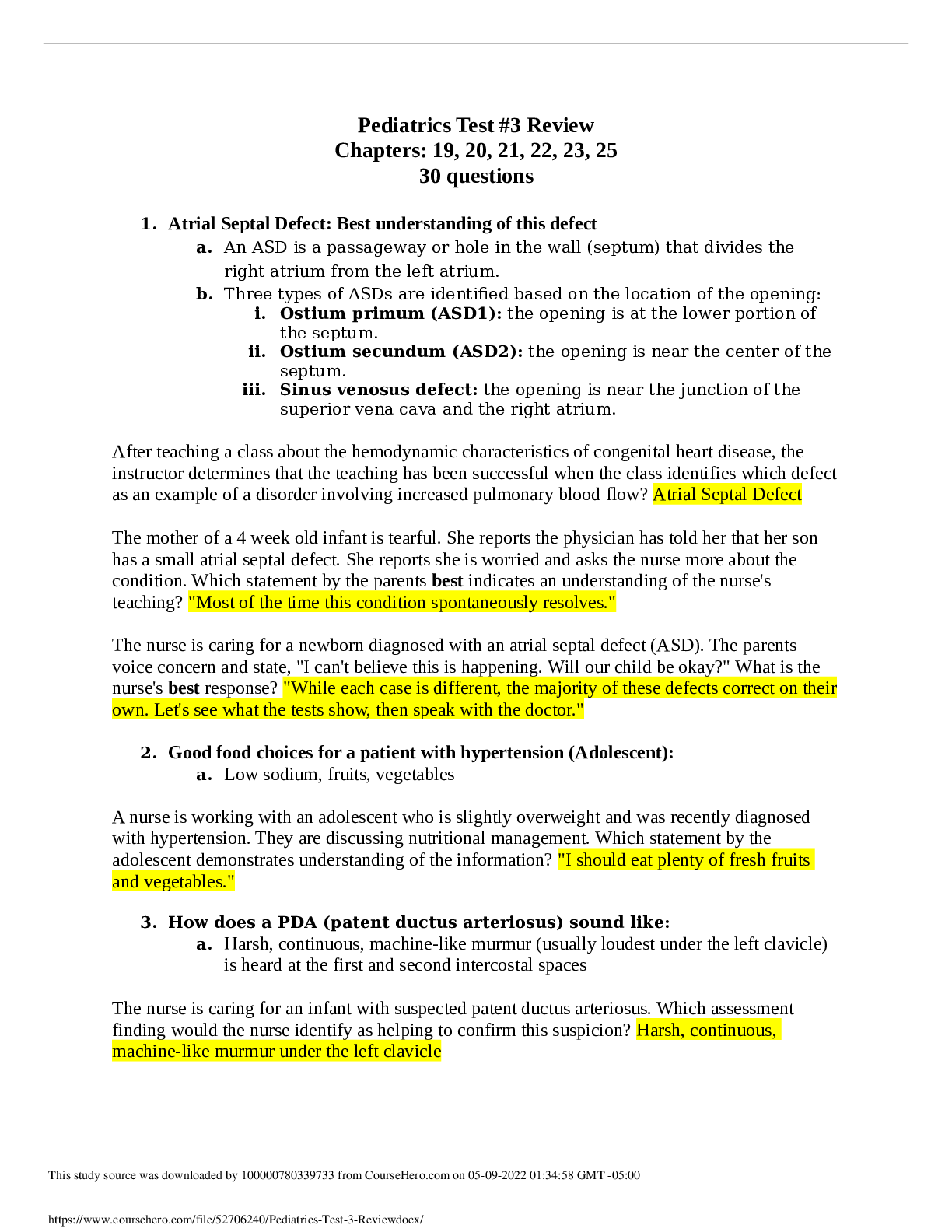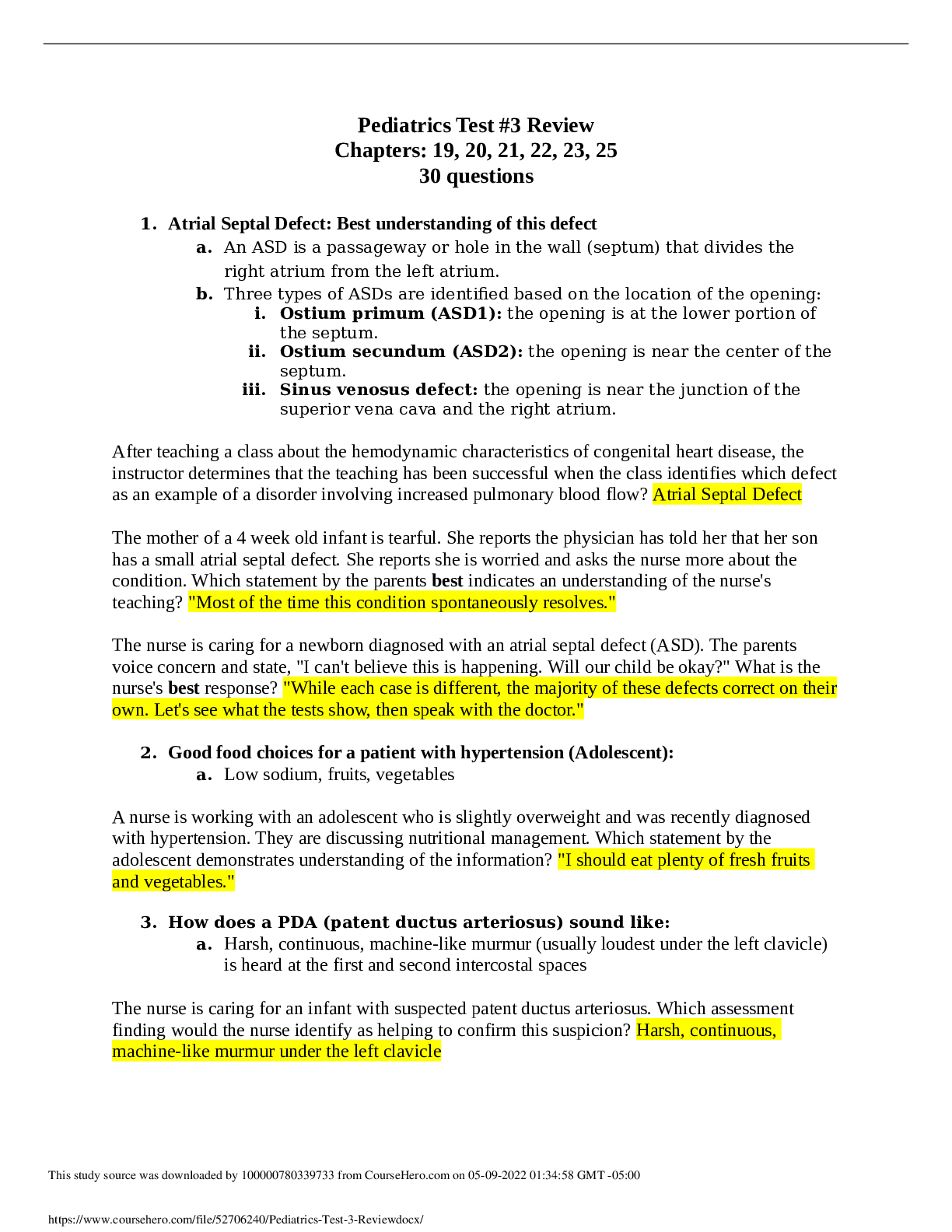Pediatrics Test #3 Review Chapters: 19, 20, 21, 22, 23, 25 30 questions
Course
Project Management
Subject
Chemistry
Category
Questions and Answers
Pages
8
Uploaded By
ATIPROS
Preview 2 out of 8 Pages


Download all 8 pages for $ 7.00
Reviews (0)
$7.00
